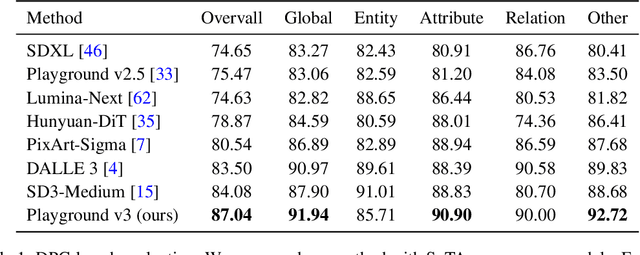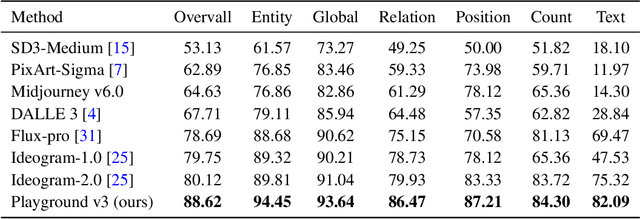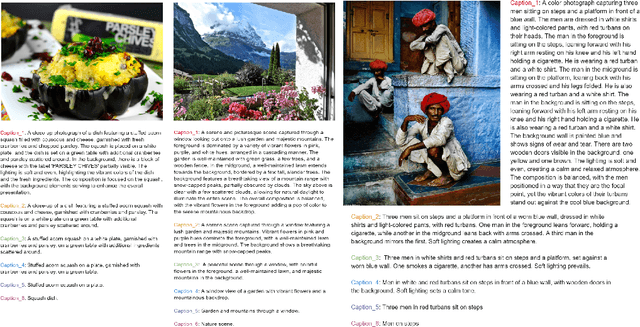Alexander Visheratin
Playground v3: Improving Text-to-Image Alignment with Deep-Fusion Large Language Models
Sep 16, 2024



Abstract:We introduce Playground v3 (PGv3), our latest text-to-image model that achieves state-of-the-art (SoTA) performance across multiple testing benchmarks, excels in graphic design abilities and introduces new capabilities. Unlike traditional text-to-image generative models that rely on pre-trained language models like T5 or CLIP text encoders, our approach fully integrates Large Language Models (LLMs) with a novel structure that leverages text conditions exclusively from a decoder-only LLM. Additionally, to enhance image captioning quality-we developed an in-house captioner, capable of generating captions with varying levels of detail, enriching the diversity of text structures. We also introduce a new benchmark CapsBench to evaluate detailed image captioning performance. Experimental results demonstrate that PGv3 excels in text prompt adherence, complex reasoning, and accurate text rendering. User preference studies indicate the super-human graphic design ability of our model for common design applications, such as stickers, posters, and logo designs. Furthermore, PGv3 introduces new capabilities, including precise RGB color control and robust multilingual understanding.
NLLB-CLIP -- train performant multilingual image retrieval model on a budget
Sep 04, 2023Abstract:Today, the exponential rise of large models developed by academic and industrial institutions with the help of massive computing resources raises the question of whether someone without access to such resources can make a valuable scientific contribution. To explore this, we tried to solve the challenging task of multilingual image retrieval having a limited budget of $1,000. As a result, we present NLLB-CLIP - CLIP model with a text encoder from the NLLB model. To train the model, we used an automatically created dataset of 106,246 good-quality images with captions in 201 languages derived from the LAION COCO dataset. We trained multiple models using image and text encoders of various sizes and kept different parts of the model frozen during the training. We thoroughly analyzed the trained models using existing evaluation datasets and newly created XTD200 and Flickr30k-200 datasets. We show that NLLB-CLIP is comparable in quality to state-of-the-art models and significantly outperforms them on low-resource languages.
 Add to Chrome
Add to Chrome Add to Firefox
Add to Firefox Add to Edge
Add to Edge